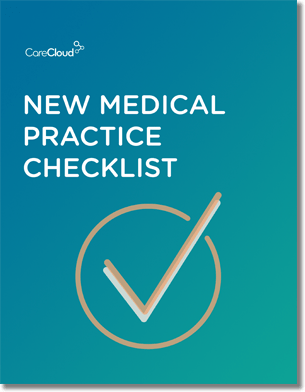There are literally hundreds of EHR features you need to worry about before you make a decision to purchase – from ePrescriptions to narrative note-taking functions.
There seems to be a misconception correlating the amount of EHR features with the quality of the system, much like cars, but it’s the power under the hood and a few key features that ensure quality and trustworthiness.
Single sign-on is quickly growing on the list of quality-ensuring features an EHR must have. Read on to learn why SSO is becoming the EHR’s version of an A/C system.
Faster Adoption
Despite the benefits and cutting-edge functionality EHRs can provide healthcare centers, any new technology faces challenges. Single sign-on is one way to assuage these difficulties, promoting faster adoption of EHRs in medical practices.
You must have clinician acceptance of EHRs to increase the rate of adoption. To get that, EHRs should be effective and productive, beginning with solving the ‘authentication’ problem. Some EHRs require physicians to log in to the EHR itself and, in the case of certain EHRs, log into again to access some of the individual applications.
Single sign-on is a step in the right direction. SSO ensures you sign-on once, confidently, with strong authentication. Depending on your SSO capabilities, you may enjoy fingerprint biometrics and one-time password tokens, and different appropriate methods depending on the specialty and size of the practice.
Furthermore, it’s easy to leave patient data unattended in a high-stress, hectic situation, which is often the case in busy practices. Single-sign on systems use fingerprint, mobile phone, or facial recognition software to identify the clinician who has authenticated at the workstation.
Save Money
Complicated login processes deter access to EHRs, leading to average losses of $2 million a year for hospitals. Single sign-on is meant to curb this waste and increase efficiency for healthcare providers.
Clinicians have an average of 6.4 passwords without SSO, killing productivity and delaying patient treatment in emergency care settings. Furthermore, lost, forgotten and compromised passwords overwork IT departments. All of this translates to absurd amounts of costs, naturally.
The Ponemon Institute’s 2011 survey about how SSO is changing healthcare examines the economic impact of failure to log into EHRs, calculating that adoption of an access-management system can save $2,675 in costs per clinician.
According to founder and chairman Dr. Larry Ponemon, single sign-on is “an efficiency issue improvement [and] security is improved as well.”
Meaningful Use
Meaningful Use pressure is driving computerized physician order entry (CPOE), even if doctors are refusing changes to their workflows. However, SSO helps engage physicians in CPOE use, namely because it significantly reduces the hassle of logging into multiple computer applications simultaneously.
By getting doctors to engage in CPOE, SSO helps practices knock a Stage 1 Meaningful Use core measure of to-do lists. Single sign-on capabilities streamline access to important computer applications at the point of care, allowing the physician to handle computerized tasks, i.e., ordering lab tests, swiftly.
Furthermore, SSO simplifies and encourages information exchange, and sharing clinical information security is among the key requirements of Stage 1 Meaningful Use.
Lastly, mobility is among the key drivers of Meaningful Use. Physicians are becoming increasingly mobile, often working remotely, and they need access to updated patient information at the drop of a hat. SSO helps physicians satisfy this need by helping them secure personal health information (PHI) data from their mobile device of care, helping not only with Meaningful Use attestation but improving the delivery of patient care.
Have you considered acquiring an SSO system for your EHR?

Do you know what you need when setting up a new medical practice?



